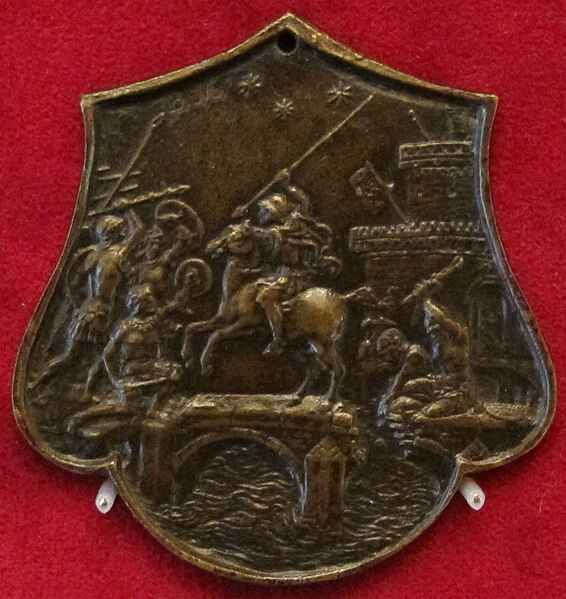A commemorative plaque, or simply plaque, or in other places referred to as a historical marker, historic marker, or historic plaque, is a plate of metal, ceramic, stone, wood, or other material, typically attached to a wall, stone, or other vertical surface, and bearing text or an image in relief, or both, to commemorate one or more persons, an event, a former use of the place, or some other thing. Many modern plaques and markers are used to associate the location where the plaque or marker is installed with the person, event, or item commemorated as a place worthy of visit. A monumental plaque or tablet commemorating a deceased person or persons, can be a simple form of church monument. Most modern plaques affixed in this way are commemorative of something, but this is not always the case, and there are purely religious plaques, or those signifying ownership or affiliation of some sort. A plaquette is a small plaque, but in English, unlike many European languages, the term is not typically used for outdoor plaques fixed to walls.

Plaque in tribute to Claude Bernard at Collège de France in Paris
A Benin Bronze plaque
An example of a lightbox used as a commemorative plaque
This sign in Dickson, Australian Capital Territory commemorates the establishment of Canberra's first aerodrome and its first fatality in the 1920s.
A plaquette is a small low relief sculpture in bronze or other materials. These were popular in the Italian Renaissance and later. They may be commemorative, but especially in the Renaissance and Mannerist periods were often made for purely decorative purposes, with often crowded scenes from religious, historical or mythological sources. Only one side is decorated, giving the main point of distinction with the artistic medal, where both sides are normally decorated. They can usually be held within a hand. At the smaller end they overlap with medals, and at the larger they begin to be called plaques. They have always been closely related to the medal, and many awards today are in the form of plaquettes, but plaquettes were less restricted in their subject-matter than the medal, and allowed the artist more freedom.
Horatius Cocles at the bridge, Renaissance plaquette by Master IO.F.F., late 15th century, Padua, 6.1 x 6.0 cm, in a shape for decorating a sword hilt
Peter Flötner, Vanitas, 1535–1540, gilt bronze
Self-portrait head by Leon Battista Alberti, c. 1435, 20.1 cm high
Knight attacked by three lions, Italian, c. 1465








